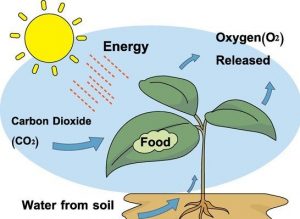What is Autotrophic Nutrition? – Definition, Types, Example
Introduction Autotrophic Nutrition
Autotrophic nutrition is a fascinating process observed in certain organisms that enables them to synthesize their own organic compounds using inorganic materials. These self-sufficient organisms, known as autotrophs, have evolved unique mechanisms to harness energy from their immediate surroundings and convert it into sustenance for growth and survival. In this article, we will delve into the intricacies of autotrophic nutrition, exploring its various types, examples, and the underlying equations that contribute to this remarkable mode of nutrition.
Modes of Nutrition
Before delving into autotrophic nutrition, it’s essential to understand the broader concept of nutrition. Nutrition refers to how living organisms obtain and utilize the substances they need to survive and grow. There are two primary modes of nutrition: autotrophic and heterotrophic.
- Autotrophic Nutrition: Organisms that can produce their food from inorganic substances, such as carbon dioxide and water, are said to exhibit autotrophic nutrition.
- Heterotrophic Nutrition: In contrast, heterotrophic organisms rely on external sources to obtain their food. They cannot synthesize their food from inorganic materials and must consume organic substances.
Now, let’s dive deeper into autotrophic nutrition.
What is Autotrophic Nutrition?

Autotrophic nutrition is a process where organisms synthesize their organic compounds from inorganic substances found in their environment. In simpler terms, these organisms are capable of converting simple inorganic compounds into complex organic molecules that serve as their source of sustenance. Through this remarkable ability, autotrophs can sustain themselves without relying on other organisms for food.
What is Heterotrophic Nutrition?
In contrast to autotrophic nutrition, heterotrophic nutrition involves organisms relying on external sources for their nutritional needs. These organisms obtain organic compounds directly or indirectly from other living beings. They are unable to produce their own food through inorganic substances, in contrast to autotrophs.
Examples of Autotrophic Nutrition
To grasp the concept of autotrophic nutrition better, it is helpful to explore a few examples that illustrate this extraordinary process.
- One classic example of autotrophic nutrition is seen in plants. Through the process of photosynthesis, plants utilize sunlight, water, and carbon dioxide to produce glucose, a key energy-rich organic compound.
- Additionally, bacteria such as cyanobacteria exemplify autotrophic nutrition by converting sunlight and atmospheric nitrogen into organic substances.
Autotrophic Nutrition Equation
The autotrophic nutrition equation provides a concise representation of the chemical changes that occur during this process. In the case of photosynthetic autotrophs, the equation is as follows:
\(6C O_{2}+6 H_{2} O+sunlight \mapsto C_{6} H_{12} O_{6}+6 O_{2}\)
This equation elucidates the transformation of six molecules of carbon dioxide and six molecules of water, in the presence of sunlight, into one molecule of glucose and six molecules of oxygen. It showcases the complexity and efficiency of autotrophic nutrition in sustaining various life forms on our planet.
Modes of Autotrophic Nutrition
Within autotrophic nutrition, two distinct modes exist photosynthetic autotrophs and chemosynthetic autotrophs. Let’s delve into each mode and explore their unique characteristics.
Photosynthetic Autotrophs
Photosynthetic autotrophs are organisms that harness the energy from sunlight to convert carbon dioxide and water into glucose and oxygen. This process, known as photosynthesis, takes place primarily in the chloroplasts of plant cells. Here’s how it works:
- Light Absorption: Pigments in the chloroplasts, such as chlorophyll, capture sunlight.
- Carbon Dioxide Uptake: Plants absorb carbon dioxide from the air through tiny pores called stomata.
- Water Uptake: Plants absorb water from the soil through their roots.
- Glucose Production: Using the energy from sunlight, plants combine carbon dioxide and water to produce glucose.
- Oxygen Release: Oxygen, a byproduct of photosynthesis, is released into the atmosphere through the stomata.
Photosynthetic autotrophs play a vital role in ecosystems by providing food for heterotrophic organisms and producing oxygen, which is essential for all aerobic life.
Chemosynthetic Autotrophs
Chemosynthetic autotrophs are organisms that use chemical reactions to produce organic compounds from inorganic substances. Unlike photosynthesis, chemosynthesis does not rely on sunlight as an energy source. Instead, it utilizes chemicals such as hydrogen sulfide (H2S) or methane (CH4) found in their environments. These organisms are commonly found in extreme environments, such as deep-sea hydrothermal vents and certain underground caves.
Here’s how chemosynthesis works:
- Chemical Energy: Chemosynthetic autotrophs use the energy released from chemical reactions involving substances like hydrogen sulfide.
- Carbon Fixation: They incorporate carbon dioxide into organic molecules, much like plants do during photosynthesis.
- Organic Compound Production: The chemical energy is used to convert carbon dioxide into organic compounds, providing energy for the organism.
- No Oxygen Production: Unlike photosynthesis, chemosynthesis does not produce oxygen as a byproduct.
Conclusion
Autotrophic nutrition, a remarkable process found in various organisms, enables them to synthesize their own organic compounds. Through modes such as photosynthesis and chemosynthesis, autotrophs effectively convert inorganic substances into energy-rich organic molecules, sustaining themselves without relying on external food sources. Understanding the intricacies of autotrophic nutrition expands our knowledge of the diverse ways life forms adapt and thrive in different environments.
We trust that this article has addressed all your questions about Autotrophic Nutrition. If you’re interested in exploring more simplified concepts, feel free to visit our Tutoroot blog section. And if you’re seeking top-notch online tuition to enhance your academic performance, Tutoroot is your ideal choice. Don’t hesitate; click here now to schedule a FREE DEMO with our exceptional faculty members in the field.
FAQ’s
What are the necessary conditions for autotrophic nutrition?
Autotrophic nutrition necessitates access to inorganic substances, such as carbon dioxide and water, along with an energy source, which can be sunlight or chemical reactions. Furthermore, autotrophs require specific enzymes and organelles, like chloroplasts in plants, to carry out the intricate processes involved in synthesizing organic compounds.
How many types of autotrophic nutrition are there?
There are two primary types of autotrophic nutrition: photosynthetic autotrophs, which utilize sunlight for energy, and chemosynthetic autotrophs, which rely on chemical reactions for energy production. These distinct modes of autotrophic nutrition demonstrate the adaptability and diversity of organisms in extracting sustenance from their surroundings.
